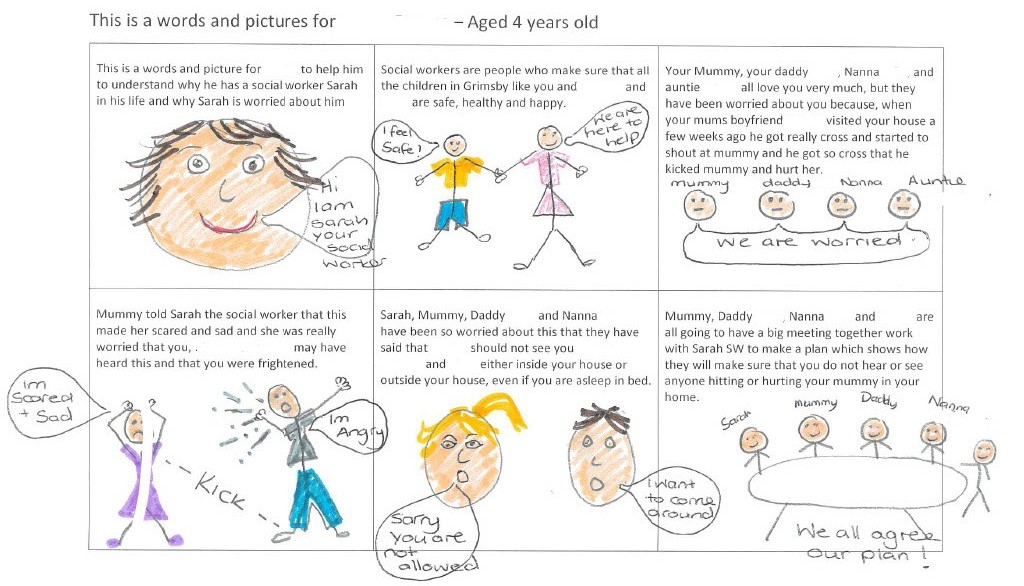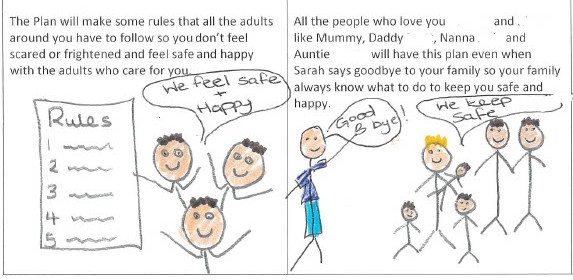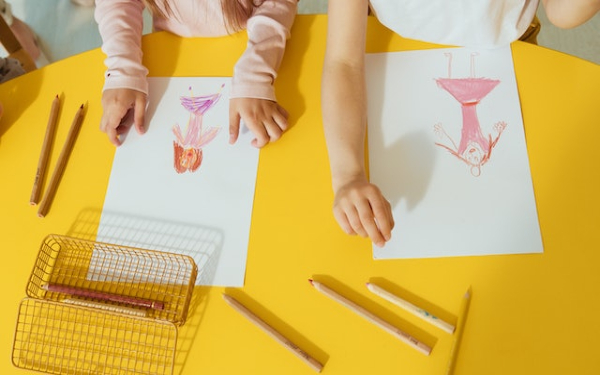“Something as simple as creating words and pictures meant a four-year-old boy, who initially thought I would remove him from his parents, trusted me enough to tell me his worries.”
This was Sarah Impey’s experience of applying Signs of Safety approaches in her direct work with a child and seeing how its recent implementation is generating positive results.
Sarah is the principal social worker in children’s services at North East Lincolnshire. She is also one of the senior management team members pushing through an initiative, launched at the beginning of the year, to re-embed Signs of Safety practice across the authority’s various children’s services teams.
Although North East Lincolnshire first started rolling out Signs of Safety in 2015, staff turnover meant it was a challenge to keep the practice model live and everyone trained in the same way, says Sarah.
Undeterred, the authority has reinvigorated training and is hopeful that this time around, the introduction of practice champions and dedicated group supervision time will give social workers the time and space to embed the model effectively.
Putting children at the centre
“I used the simple words and pictures tool to explain to the little boy who I was, what my role was, why I was coming to see him, what my worries were, and what the next steps would be,” says Sarah.
“This information brought down his and his family’s anxieties because they knew I wasn’t coming to whip him off to somewhere. They also understood the reasons why I was worried for him and that gave him a platform to talk.

Sarah shares an example of the words and pictures work she did with a four-year-old child at North East Lincolnshire.
“He was able to tell me, in quite some detail, what he was worried about. From that, we were able to develop a strong safety plan with the boy’s wider family network to address all those worries.”

‘Words and pictures’ is part of the Signs and Safety approach that is designed to help children to understand events that are difficult for the adults around them to discuss
Refreshing memories
Keeping the voice of the child at the centre of practice is a key principle that social workers across children’s services are embracing with the implementation of Signs of Safety.
The training has been delivered through a four-module programme over four dedicated days spread out over several weeks. This meant that practitioners like Fauve, a level 2 social worker in the assessment and intervention team, could dedicate a day to the training without having to split her time with her caseload responsibilities.
“I work in the assessment and intervention team and my role is fast-paced,” says Fauve. “Doing the training has helped to refresh mine and everyone’s memories and encouraged us to be more reflective in our ways of working.”
I had the choice to go to outstanding-rated authorities, but I want to change the face of North East Lincolnshire
Appreciative enquiry
Training is designed to help practitioners get the most out of their interactions with children and their families. The modules cover topics such as getting the best out of family network meetings and safety planning, how to develop the best questions when communicating with families and children, and how using the words and pictures technique can help. The words and pictures tool allows practitioners to explain complex ideas to children using images and wording for them to better understand why there is social work intervention.
Light bite sessions are available to practitioners after they have taken the initial Signs of Safety modules. The light bite sessions act as a refresher course, allowing social workers to drill down into specific areas learnt in the main Signs of Safety course. Group supervision gives practitioners another opportunity to embed the approach and allows them to use techniques such as appreciative enquiry to probe the effectiveness of the practice model.
“By using appreciative enquiry during group supervision, we are encouraging practitioners to take a curious approach to case work,” says Sarah. “It is about making sure we are asking circular questions to really dig deep under the surface of case work, which helps to really drive positive outcomes for children.”

Image credit: Oleksandr Pidvalnyi – Pexels
An emphasis on feedback
Social workers are also supported by practice champions, a new addition to service teams, who provide one-to-one support in learning.
Jess is a social worker and one of those practice champions whose job it is to support practitioners. “Group supervision allows us to look at how we will use practice, how it impacts us and why it is beneficial,” she says. “Where practitioners are struggling with cases, we use live examples to help them understand the benefit of using the practice model. It is my job to enthuse them to see how this is going to work in real life.”
Jess says there is a strong emphasis on feedback and evidencing to show that they are using the practice model.
“We have briefings every two weeks in each team and take turns to share what we are doing. We also have the Signs of Safety knowledge bank – a skills hub where we can look at best practice examples of the approach.”

Sarah Impey, PSW
Keeping children together
For Jess, the benefits of embedding Signs of Safety are unequivocal. She recalls how the approach helped her to de-escalate a situation that could have resulted in the permanent removal of three siblings. Her intervention using this approach meant that the children avoided being moved a third time in the space of seven months.
“One of the concerns was that the middle child had been having a lot of physical outbursts,” she says. “A previous social worker had told the children’s carer to put the middle child in a space where nobody else was and advised the carer to support her to regulate herself.”
However, because the house was a mid-terrace council property with six children in total and two adults, the carer concluded that the only suitable place would be the bathroom, Jess explains. This decision led to a perception that the middle child was being neglected when really, the carer was trying to apply the recommendation with the resources around her. It is that context and greater communication that Jess used to resolve the challenge.
“If you read the initial concerns raised about the case as a big, long word document, it looks horrendous,” says Jess. “But if you map the case into columns of what are harms, complicating factors, successes, there were far more complicating factors and only one incidence of actual harm that we could evidence.
“We don’t remove children for complicated factors, we remove children when complicated factors become harm. We work with complicated factors and build a safety plan around them, identifying what is already working, successes that we can already see, and we work with the children and family to change that. I was able to apply my Signs of Safety knowledge to evidence that – to ensure these children did not have to be moved again.”

image credit: Yan Krukov – Pexels
The future
Experiences like these are why Jess loves her role. “For me, it doesn’t feel like a job. I had the choice to go to outstanding-rated authorities, but I want to change the face of North East Lincolnshire because I can see the potential and want to be part of the solution.”
She is not alone in that thinking. Sarah is hopeful that re-embedding Signs of Safety will have a two-pronged approach on changing the culture of practice at both practitioner and management level.
“We’ve had a rough ride and we are still on a journey. I have been working at North East Lincolnshire for 20 years so I’ve seen all of the changes and innovations, and for me, this model is one of the most positive experiences for social workers, children and families.”
Find out more about working at North East Lincolnshire through the latest vacancies here.




 Facebook
Facebook X
X LinkedIn
LinkedIn Instagram
Instagram